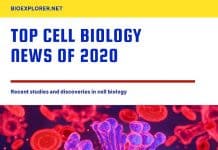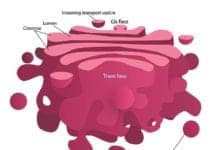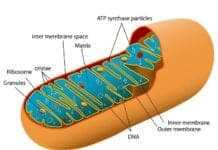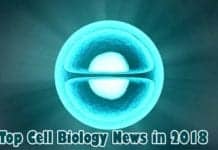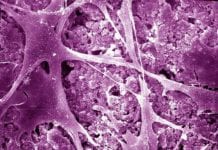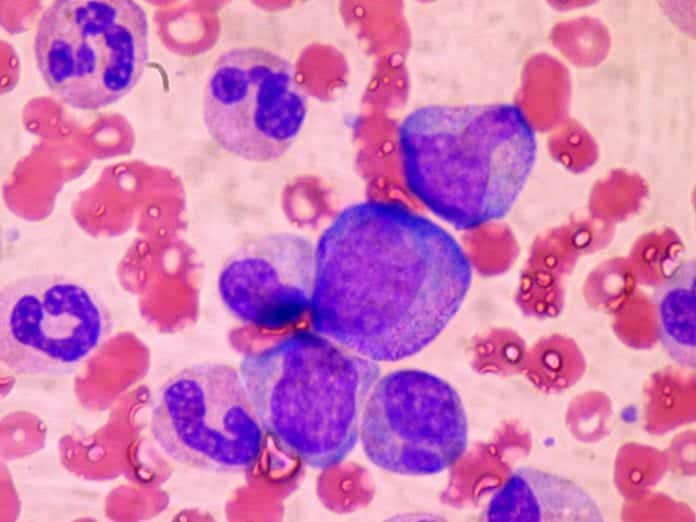
Hematopoietic Stem Cells: In living organisms, a specialized system that consist of blood and its progenitors are referred to as the hematopoietic system[1].
In particular, this system is made up of cells with specialized functions such as the red blood cells (for carrying oxygen to tissues), white blood cells (for immune defense against pathogens, and foreign agents), platelets (for blood clotting), macrophages and lymphocytes (also for immune defense).
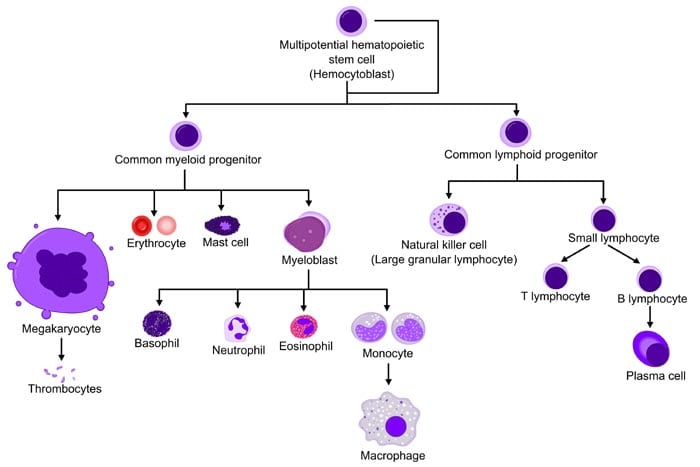
However, many of the said blood cells are temporary and need to be replaced with new ones continuously. But fret not because a single cell can solve the problem!
Every day, almost billions of new blood cells are synthesized within the body – with each coming from a specific progenitor cell called the hematopoietic stem cell.
Table of Contents
How to pronounce Hematopoietic Stem Cells?
| [responsivevoice buttontext=”Hematopoietic Stem Cells”][/responsivevoice] | Word Origin: Greek |
![]()
What is Hematopoiesis?
The formation of all kinds of blood cells including creation, development, and differentiation of blood cells is commonly known as Hematopoiesis or Haemopoiesis.
All types of blood cells are generated from primitive cells (stem cells) that are pluripotent (they have the potential to develop into all types of blood cells).
Also referred to as hemocytoblasts, hematopoietic cells are the stem cells that give rise to blood cells in hematopoiesis.
- When the blood cell is in the immature form, the cell name would end with ‘blast‘ and when it becomes matured, the cell name would end with ‘cyte‘. (Example: The T-lymphoblast develops into T-lymphocyte).
- In terms of physical appearance, hematopoietic stem cells (HSCs) can be likened to lymphocytes which have a rounded nucleus and overall cell shape.
- However, they are too minute in size and are unidentifiable and difficult to be observed directly under the microscope.
![]()
Where Does Hematopoiesis Occur?
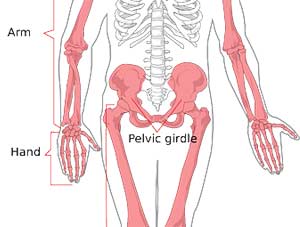 The hematopoiesis process occurs in the yolk sack during the prenatal stage, followed by in the liver, and finally in the bone marrow.
The hematopoiesis process occurs in the yolk sack during the prenatal stage, followed by in the liver, and finally in the bone marrow.
In a healthy adult, hematopoiesis occurs in the bone marrow and lymphatic tissues, where 1000+ new blood cells (all types) are generated from the hematopoietic stem cells to main the steady-state levels.
![]()
Where Are Hematopoietic Stem Cells Found?
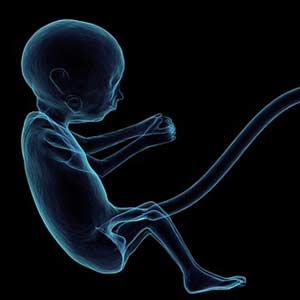 In adult mammals, hematopoietic cells are usually found in the red bone marrow of long bones such as the femur, pelvis, and sternum.
In adult mammals, hematopoietic cells are usually found in the red bone marrow of long bones such as the femur, pelvis, and sternum.
They can also be found in the umbilical cord and in the blood from the placenta.
![]()
Who Discovered Hematopoietic Stem Cells?
It was long believed that the majority of hematopoiesis occurs during ontogeny (origination and development of organism) and that the mammalian hematopoietic system originated from the yolk sac per se.
- However, a study by Robin and his colleagues (2003) published in the journal Oncology Research[2], revealed that the first hematopoietic stem cells have a vascular endothelial (inner surface of blood vessels)/mesenchymal (mesoderm al embryonic) origin.
- Robin experiment found out that these stem cells are produced in the aorta-gonads-mesonephros (AGM) region, dorsal aorta, and the inner portion of the embryo. Aside from that, they were also observed to originate from the yolk sac and umbilical arteries.
- After that, they expand in the liver of the fetus before taking over the bone marrow prior to birth.
![]()
Properties of Hematopoietic Stem Cells

![]()
1.Multi-potency
 Multi-potency[3] is the ability of stem cells to give rise to other types of cells with specific functions, but is limited in its ability to specialize.
Multi-potency[3] is the ability of stem cells to give rise to other types of cells with specific functions, but is limited in its ability to specialize.
- Hematopoietic stem cells are so intriguing yet remarkable[4] because the vast diversity of the mammalian blood system (includes red blood cells, leukocytes, platelets, macrophages, lymphocytes, mast cells, and natural killer cells) naturally are derived from them.
- However, there are some exceptions – hematopoietic cells cannot give rise to cells of a very different tissue type such as the nerve cells in the nervous system or skin cells in the integumentary system.
- Adult stem cells (like hematopoietic stem cells) only generate the cell types of the tissue in which they reside.
![]()
2.Self-Renewal
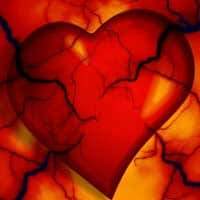 Self-renewal is a special ability[5] of hematopoietic stem cells to live longer by continuously dividing to make more cells. For instance, self-renewal is a maintained cell division of the cell at an undifferentiated state.
Self-renewal is a special ability[5] of hematopoietic stem cells to live longer by continuously dividing to make more cells. For instance, self-renewal is a maintained cell division of the cell at an undifferentiated state.
- Unlike most cells in the body which normally do not replicate themselves many times. hematopoietic cells can transcend this mechanism. When grown in the laboratory, even just a starting population of a few stem cells can proliferate and yield million cells.
- Mature blood cells have a short life span and the special ability of hematopoietic stem cells to survive through self-renewal is very vital in sustaining life.
- Given this unique regenerative ability, hematopoietic stem cells offer promising potential for treating diseases like aging, heart disease, diabetes.
![]()
3.Apoptosis
 Also known as programmed cell death, apoptosis[2] is a mechanism of cells to self-destruct without causing damage to the organism itself. For instance, apoptosis is triggered by certain signals or by various foreign agents like viruses.
Also known as programmed cell death, apoptosis[2] is a mechanism of cells to self-destruct without causing damage to the organism itself. For instance, apoptosis is triggered by certain signals or by various foreign agents like viruses.
- In contrast to their self-renewal property, hematopoietic cells need apoptosis in order to regulate their number and maintain the normal development of tissues.
![]()
4.Migration
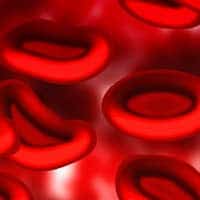 Interestingly, hematopoietic cells have the ability to pass across the bone marrow barrier (a barrier between the blood circulation and the bone marrow for regulating the permeability of sinusoid blood vessels) hence, can move in the blood from bone marrow to another.
Interestingly, hematopoietic cells have the ability to pass across the bone marrow barrier (a barrier between the blood circulation and the bone marrow for regulating the permeability of sinusoid blood vessels) hence, can move in the blood from bone marrow to another.
- Such ability of hematopoietic cells helps them to be directly collected from the blood.
- Studies also suggest that this property of migration of hematopoietic stem cells is highly conserved in evolution as it was observed to occur in mice, dogs, and humans)
![]()
Functions of Hematopoietic Cells
As alluded to earlier, blood cells and blood cell components are formed in a process called hematopoiesis.
Coming from the Greek words “hemato” and “poiesis” which mean “blood” and “to make” respectively, hematopoiesis occurs in the bone marrow and is responsible not only for the synthesis but also the multiplication, and differentiation of blood cells.
Shown below is a diagrammatic illustration of the different blood cell types that hematopoietic cells can give rise to:
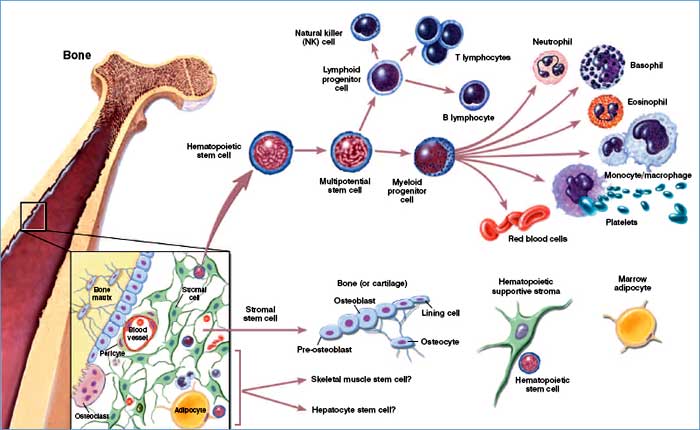
![]()
Clinical uses of Hematopoietic Stem Cells
Believe it or not, hematopoietic stem cells can be transferred among organisms. Such is called a hematopoietic stem cell transplantation and can be performed in three different ways: autologous (cells are derived from the patient’s own cells), synergic (from his/her identical twin) or allogenic (from a donor).
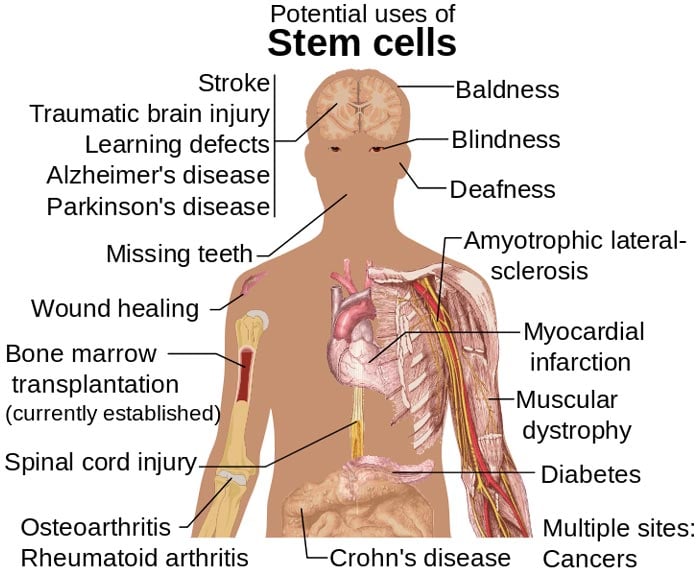
- Because it involves blood and cells, a possibility of rejection may be experienced as the recipient’s immune system may attack the donor’s foreign cells.
- Because of this, this process of transplantation is only performed in people with severe cases ( i.e. leukemia and lymphoma)
![]()
The mammalian blood system showcases the equilibrium between the functions of hematopoietic stem cells. Intensive studies have already shown the structures and molecules that control these stem cells, but the exact picture of the underlying molecular mechanisms is still unclear.
Above everything else, it is important to note that such issues are not just of academic interest but can also be relevant in devising future novel methods of diagnosing and treating various diseases associated with cells.


